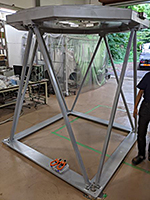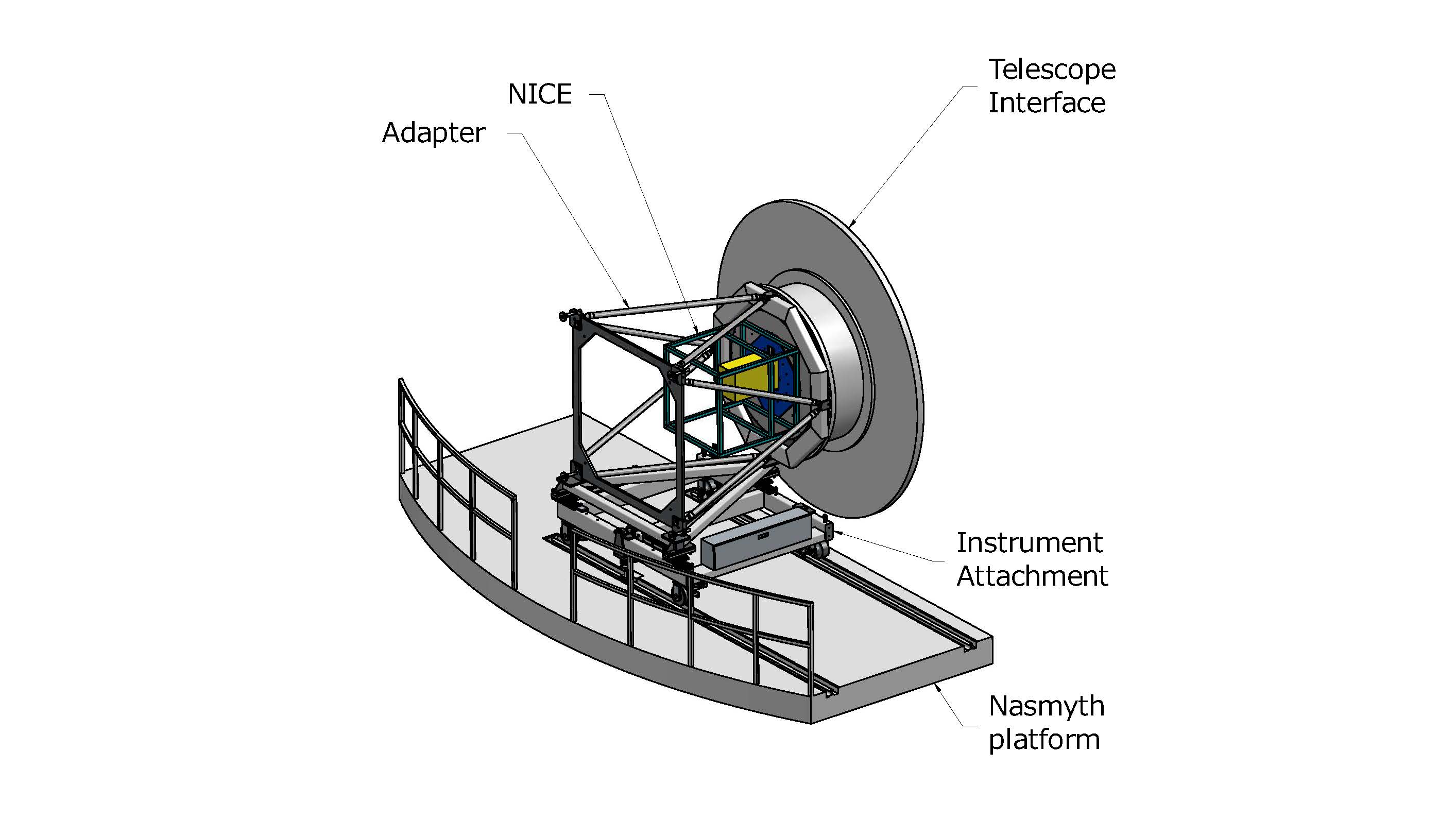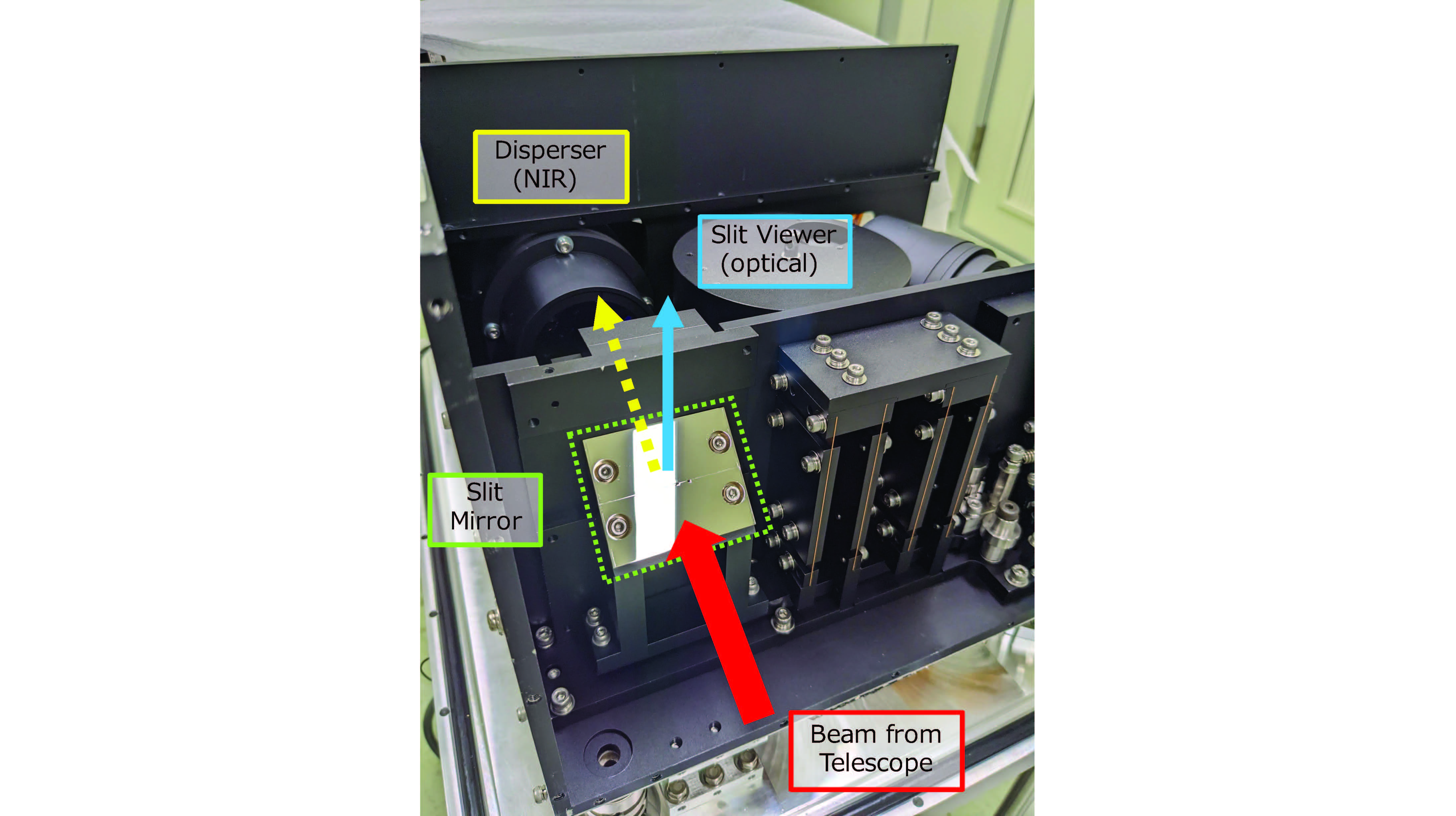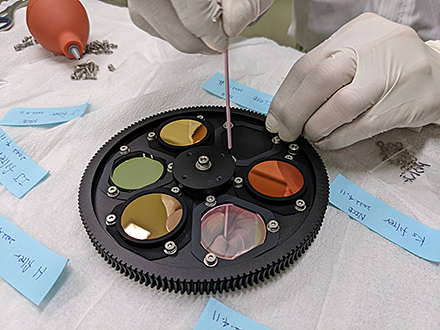
|
TAO Project |
|
The TAO project

|
Near-Infrared Echelle Spectrograph NICE is under preparation for shipping to ChileNICE (Near-Infrared Cross dispersed Echelle spectrograph) is the first-light instrument for the TAO telescope which was developed at the Institute of Astronomy (IoA), the University of Tokyo in 2000. NICE covers the near-infrared wavelength range of 0.9 to 2.5 micron with a spectral resolution of 2,600, using an echelle grating and a cross-disperser as a dispersing element. Furthermore, it has imaging capability for J, H, and Ks bands as well as spectroscopic mode. NICE was installed on the 1.5-m infrared telescope at the National Astronomical Observatory of Japan (NAOJ) and the 1.6-m Pirka telescope of Hokkaido University (Preparations of NICE are underway), and it was used for various types of massive stars and Venus. For example, near-infrared spectroscopic observations of carbon stars, yellow supergiants, and Wolf-Rayet stars have been conducted to determine their effective temperatures and to study their mass ejections. In the Venus observations, the obtained NIR spectrum is currently being analyzed to understand the dynamics and structure of its thick atmosphere by combining with the atmospheric model. Since the atmospheric transmittance is high at the TAO site, it can enable seamless data in the near-infrared wavelength range of 0.9 to 2.5 micron, which is expected to facilitate further existing research. After the end of NICE operations on the Pirka Telescope in 2018, NICE has been undergoing refurbishment and development as the first-generation instrument of the TAO 6.5m telescope. As NICE was initially designed for smaller aperture telescopes, and then it requires hardware modifications for optimal installation with the large TAO 6.5-m telescope and upgrades for software systems. This report will detail the current status of NICE. In order to mount NICE onto the TAO 6.5-m telescope, specialized items such as a dedicated mounting device (Fig. 1) and new spectrographic slit that matches the optical system are necessary (Fig. 2). The mounting device, as shown in Fig.1, was designed to attach small instruments like NICE to the Nasmyth focus of the telescope. It has a height of 2m, a lower frame of 2m square, and a mounting section of 2m in diameter (the sizes are approximate). It is constructed of aluminum alloy and steel, and its weighs approximately 600 kg. This mounting device enables other compact PI instruments to be mounted to the TAO telescope, in addition to NICE. The newly manufactured slit is an aluminum mirror coated with silver and a protective layer, enhancing its reflectivity in the visible range for slit viewer as well. Early in the 1st production of slit, cleaning marks were discovered on its surface, and there were concerns about the effect on optical performance. This led to the decision to redesign the slit, and upon completion, it was verified that there were no significant issues. Additionally, we integrated the standard imaging filters (J, H, and Ks) into the system to calibrate the flux from objects, as illustrated in Fig. 3.
Regarding the software, we are currently investigating the operational methods of the TAO telescope system. Since NICE is a slit spectrograph, objects need to be precisely positioned within the slit. To ensure this, we utilize the slit viewer to confirm if the target object is being introduced correctly into the slit. The reflected light by the slit mirror is used for optical monitor, on the other hand the light passing through the slit is dispersed and detected by the near-infrared detector.(Fig. 2) NICE had been controlled by Windows 2000 before. The entire control system has been renewed to a Linux system so that we can operate NICE in the latest TAO system. It enables us to operate almost all instruments remotely through the TAO observatory system. Since the NICE detector and the slit viewer operate within different wavelength ranges, each object's apparent position on the slit to deviate slightly based on the altitude of the target object. This phenomenon, known as atmospheric dispersion, is due to the fact that the refractive index of light in the atmosphere varies with wavelength. At the TAO site, for instance, the maximum difference in the apparent position between visible and near-infrared light is roughly 1 arcsecond (at an altitude of around 20 degrees). Therefore, we need to correct for this effect in actual observations. And we are currently considering NICE and telescope control methods that address this phenomenon and developing the customized tools. Furthermore, based on conducting instrument performance evaluation experiments, we are also in the process of developing an Exposure Time Calculator (ETC). This tool will allow us to assess the actual observation time required for the observations. Additionally, we are working on establishing a pipeline for data analysis and formulating an observation plan. As evident, we are diligently preparing for transportation to site and observation with the TAO telescope, and we are now in the final stages before achieving First Light at the TAO telescope. We encourage you to stay connected for forthcoming research results and developments.
Copyright(c) 2022 TAO Project, Institute of Astronomy, Graduate School of Science, University of Tokyo
|



